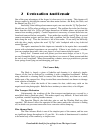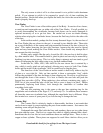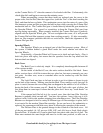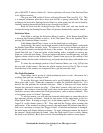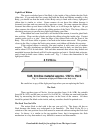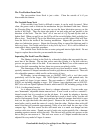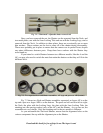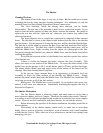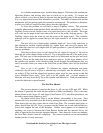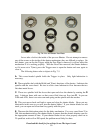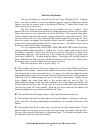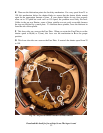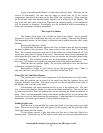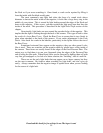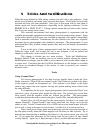Download this book for free at http://www.TheArgusA.com/
49
As a shutter mechanism ages, terrible things happen. Dirt enters the mechanism,
lubricants thicken, and moving parts start to freeze up or get sticky. To reverse the
effects of time, a very thin oil must be injected into the moving joints of the mechanism.
It is very important to use as little lubricant as possible. Too much oil attracts dirt and the
mechanism will just jam up again; this cannot be overstressed. The problem is, therefore,
to place very little oil, much less than a drop, into the right places.
To solve this problem, we will have to turn to Capillary Action. This particular
scientific phenomenon maintains that fluids naturally flow into very small places. To see
Capillary Action at work, dip the corner of a paper towel into a glass of water. The water
will crawl up the paper towel even above the level of the water, defying gravity. The
Capillary Action sucks the water up into the pores in the paper towel. This scientific
principle will be applied to ensure that just the right amount of oil reaches the correct
places.
The best oil to use is high-quality synthetic watch oil. Less costly and easier to
find alternatives include sewing machine oil, lighter fluid, and two-cycle engine fuel.
The author has used two-cycle engine fuel (40 parts gasoline to 1 part oil) and has not run
into any problems.
Now that we know how we will deposit the oil, where do we put it? Do not let
lubricant get on the shutter blades or the iris. Try to keep lubricant off of the teeth of any
gear. The only part of the mechanism that needs to be lubricated are the gear and lever
spindles. These are the shafts that levers and gears spin on. In the Argus shutters, all of
the spindles run parallel to the direction light travels through the mechanism; they are
easily accessible when you remove the Face Plate of the Shutter (this will be described
later).
Now to put it all together. To lubricate the shutter mechanism and timer
clockwork, dip one end of a Q-tip, or alternatively a toothpick, into the lubricant. If you
are using a Q-Tip, hold the dipped end against a paper towel for one second so that the
excess lubricant flows away. Now press it to the spindle end. A small amount of
lubricant will seep from the Q-Tip to the spindle and lubricate it. Work the mechanism
so that the lubricant is spread around.
The Pre-War Shutter
The pre-war shutter is found on the Argus A, AF, pre-war A2B, and A2F. While
the shutter is generally the same, the face plates are differ considerably. This is the same
shutter found on the Argus A3 and Argus ColorCamera (CC), and these procedures can
be used to repair those cameras as well.
No matter which Face Plate is on the Shutter, disassembly is the same. First
unscrew the Lens Assembly from the front by turning the metal cylinder with your hand.
Then remove the two tiny screws that sit on the Face Plate. The cosmetic metal plate, or
plates, should then fall off. Next, you must turn the Shutter on its side and find the two
screws that support the rest of the faceplate. Neither screw appears to be attached to
anything; one screw is between the Cable Release Socket and the Aperture Lever, the
other is opposite the first near the Aperture Indicator. Once these two screws are undone,
the Face Plate should come off completely. The removed portion can be disassembled
further, but this is rarely necessary.



